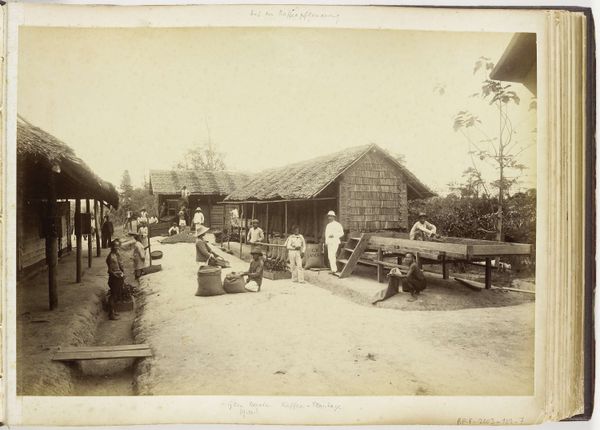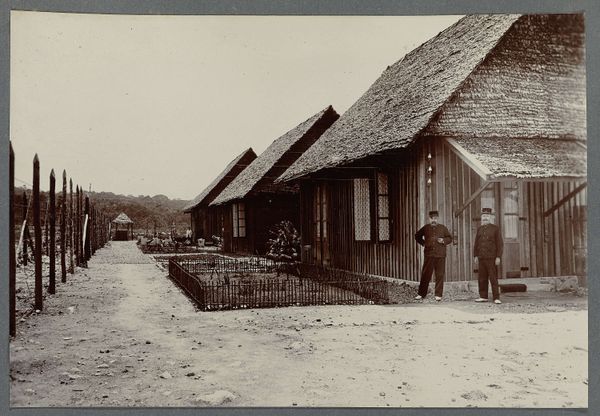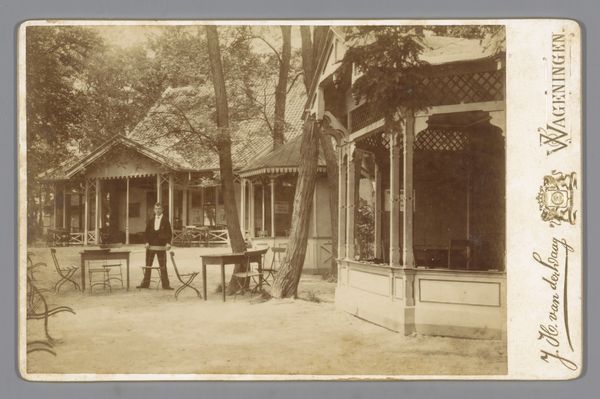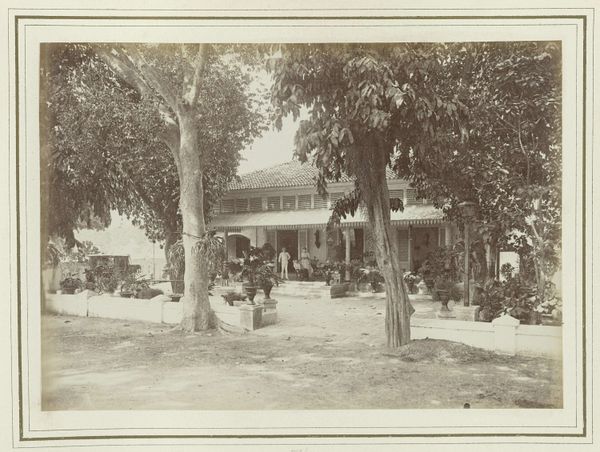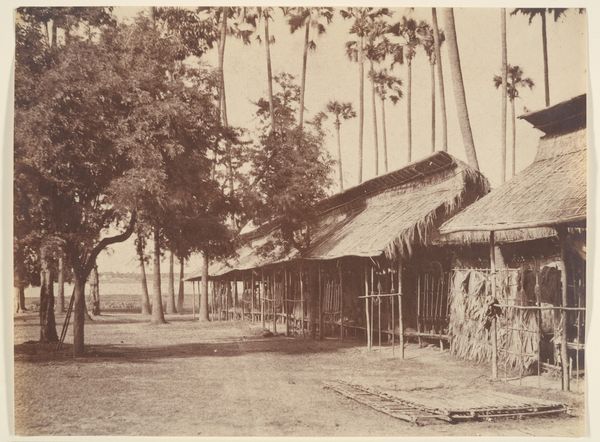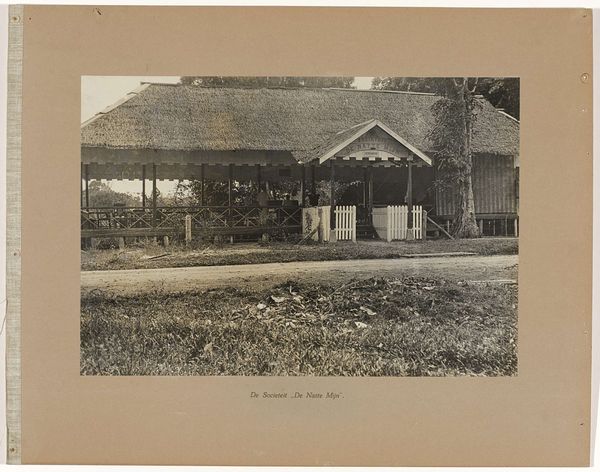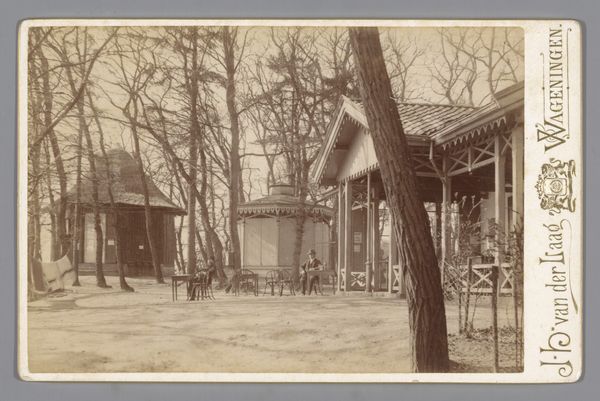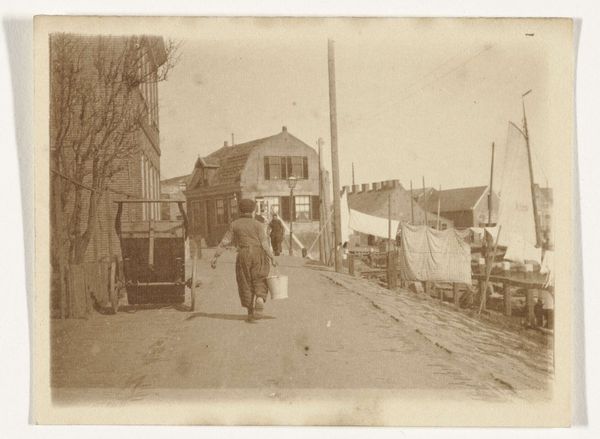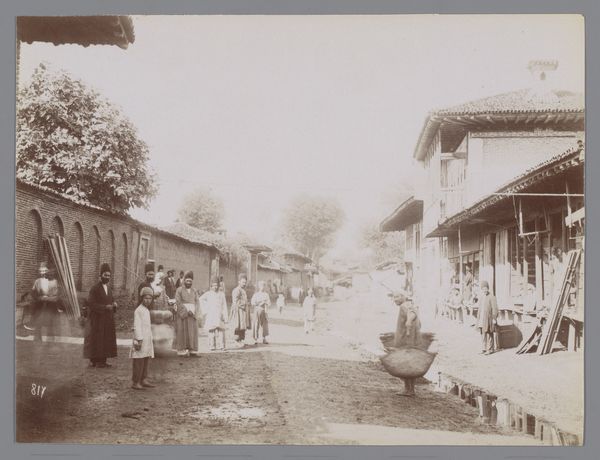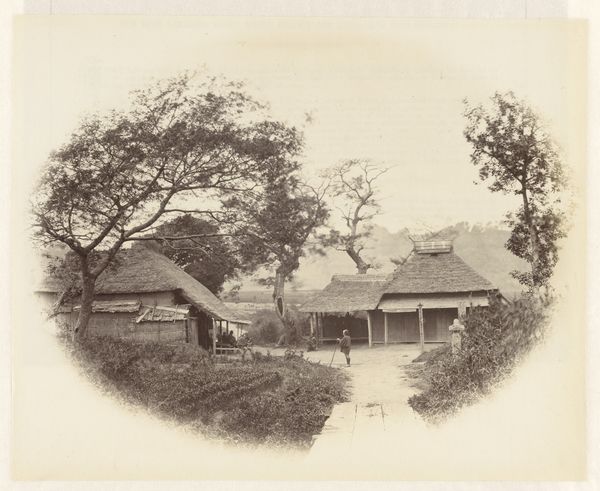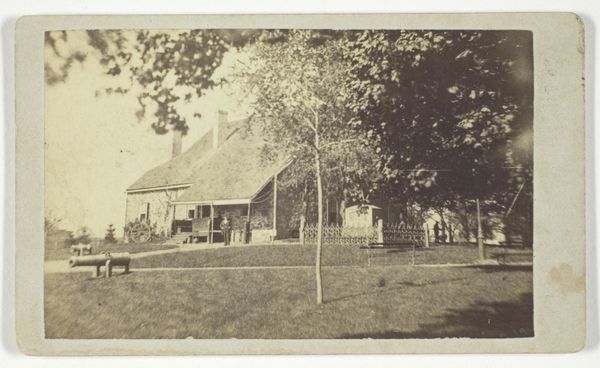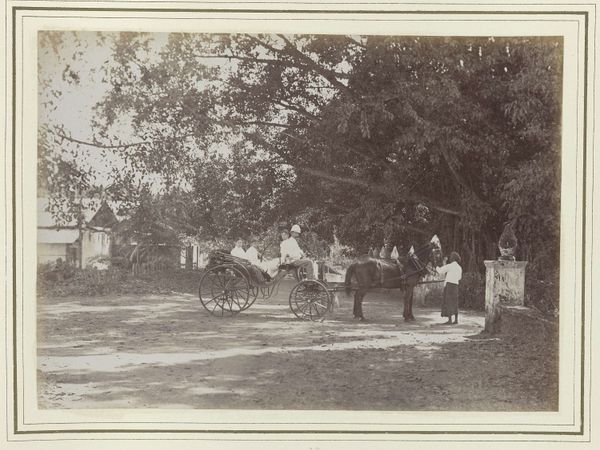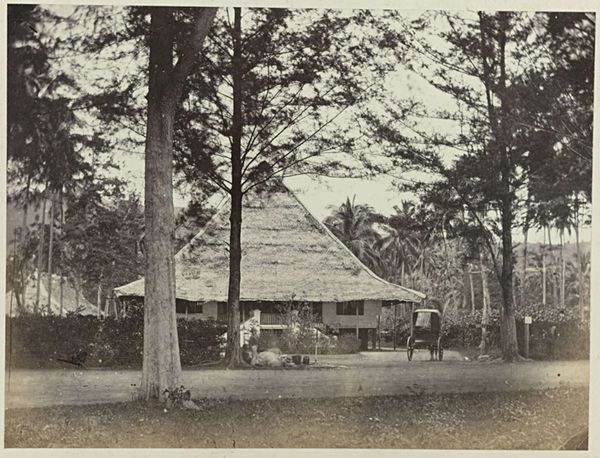
photography, gelatin-silver-print
#
landscape
#
photography
#
gelatin-silver-print
#
genre-painting
Dimensions: height 96 mm, width 146 mm, height 107 mm, width 166 mm
Copyright: Rijks Museum: Open Domain
This photograph of Westerbouwing in Oosterbeek was made by J.S.J. de Jongh using a process that was revolutionary for its time. Photography in the 19th century involved a complex and labor-intensive process, often involving coating glass plates with light-sensitive emulsions. The photographer had to be a chemist as well as an artist, carefully controlling the exposure and development to capture the image. The sepia tone you see here is characteristic of early photographic printing methods, where metallic salts were used to create a stable image on paper. Consider how this contrasts with our contemporary experience of image-making. Today, digital photography allows us to capture countless images instantly, and to share them globally. This was an age of scarcity in terms of images, and each one took time and great skill. Paying attention to the material processes helps us understand not only the aesthetic qualities of the photograph, but also its cultural significance, and the amount of work that was involved in its production.
Comments
No comments
Be the first to comment and join the conversation on the ultimate creative platform.
